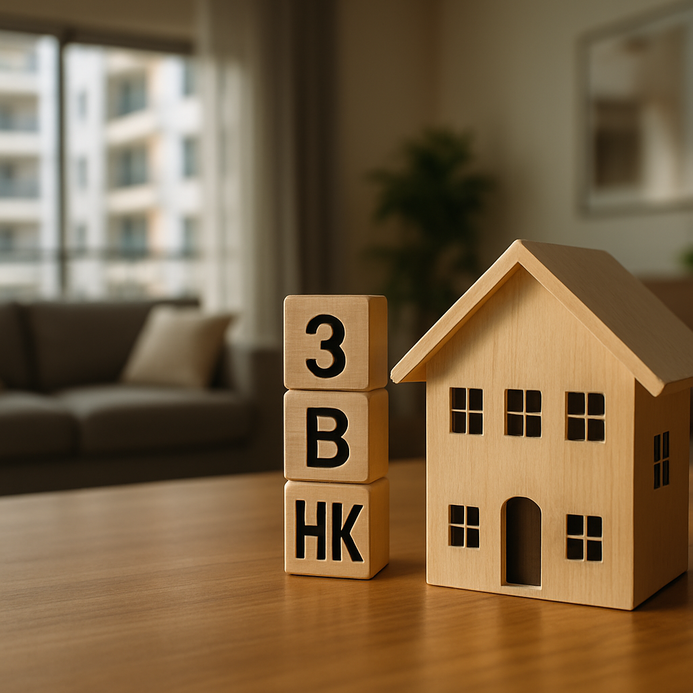Sale Of Property And Capital Gains Tax: Maximize Your Exemption
Understanding Capital Gains Tax: An Introduction
Capital gains tax, or CGT for short, it’s a big deal if you’re selling your property for more than you bought it. Especially if it’s your first home. In India, if you hold onto that property for over two years, you’re looking at a long-term capital gains tax of 20%, after some indexation. If it’s been less than two years? Well, those short-term gains get taxed according to your income slab.
Sale of Property and Capital Gains Tax Implications
So, when you’re gearing up to sell, make sure you know your adjusted basis. That’s the purchase price, plus any upgrades you’ve thrown in. Your profit, that’s your capital gain, buddy. Here’s how these taxes stack up, depending on how long you’ve held onto your property:
| Holding Period | Tax Rate |
|---|---|
| Less than 2 years | As per individual income tax slab |
| 2 years or more | 20% (with indexation) |
Now, for first-time sellers? You might be in luck! Section 54 of the Income Tax Act offers a slice of relief, allowing you to save on capital gains taxes if you reinvest in another residential property. It can really take the stress off when you’re facing those taxes. Trust me.
The IRS has laid out details about how certain factors impact what you owe in capital gains when selling your home. Curious? Check out the IRS Property Basics for loads more info on this stuff.
And hey, a little planning goes a long way when it comes to tax liabilities, right? For handy strategies on trimming down your capital gains when selling your home, swing by CNBC Tips.
Need to dive deeper into capital gains tax implications? Check out our related article on Section 54 and Capital Gains. Getting to grips with these key points can really help you make smarter financial moves when selling your property.
The Essentials of Section 54: What You Need to Know
Section 54, here’s the scoop. It’s all about giving you, the Indian seller, a chance to save some serious cash when unloading your residential property. This section focuses on exemptions from long-term capital gains (LTCG) tax. I mean, who wouldn’t want to save on taxes, right?
Eligibility Criteria for Section 54
1. You’ve gotta own the property for over 24 months.
2. This exemption only flies if it’s a residential house top of the sale.
3. You must reinvest those profits into another residential property within one year before or two years after the sale.
Long-Term Capital Gains Tax Percent
Right now, if you’re looking at long-term capital gains, expect a tax rate of around 20%. Yep, it’s a chunk of change from your profit.
Here’s a quick look at what you need to know combining property sales and Section 54 exemptions:
| Aspect | Details |
|---|---|
| Minimum Holding Period | 24 months for long-term classification |
| LTCG Tax Rate | 20% |
| Time Frame for Reinvestment | 1 year before & 2 years after sale |
| Exempted Amount | Entire LTCG (up to cost of new property) |
Using Section 54 can be a game changer. Following the rules tightens up your strategy with real estate investments, making them work harder for you. For more details, feel free to check those IRS guidelines.
And if you wanna dive into more property tax talks, don’t forget to look at the ultimate guide to taxes on selling mortgaged property and NRI capital gains tax on property.
Key Conditions to Qualify for Exemption Under Section 54
Alright, so you wanna snag that Section 54 exemption when selling your place? Here’s what you’ve gotta keep in mind. There’s a few legal and financial boxes to check. Get familiar, and it could lighten the capital gains tax load when you sell.
1. Ownership Duration
Make sure you’re holding onto that property for at least two years before you decide to sell. Anything less, and you’re looking at short-term capital gains tax—yup, that’s your income tax slab rate kicking in, probably raising your tax bill.
2. Reinvestment Requirement
To actually claim that sweet Section 54 exemption, you’ll need to toss your capital gains into a new residential property. You can do this within two years post-sale or in constructing a new pad within three years.
3. Amount of Reinvestment
Keep in mind, the exemption only covers what you reinvest. So, if your capital gain sits at INR 50 lakhs, and you toss INR 30 lakhs into a new place? Only INR 30 lakhs of that gain gets the tax break.
4. Limitations on Property Type
Heads up, the new property needs to be residential. If you think about using some of those sale proceeds for something non-residential, no dice. That part won’t fly tax-free.
| Condition | Requirement |
|---|---|
| Ownership Duration | Minimum of 2 years |
| Reinvestment Timeline | Within 2 years of sale or 3 for construction |
| Reinvestment Amount | Up to the total capital gains |
| Property Type | Must be a residential property |
Get these conditions down, and you’re set to handle your capital gains tax like a pro. For more details, check out these resources:
Don’t forget to check out our other articles on taxation on short-term capital gains and capital gains tax on rental property.
The Timeline for Reinvestment: How and When to Act
Alright, let’s chat about timing. When to reinvest those capital gains? It’s super important, especially for property owners thinking about their next move. Thanks to Section 54, you can put your capital gains from selling a property into another residential one. But here’s the kicker: nail that timing. You’ve gotta buy the new property within 2 years from your sale date.
Important Dates
| Event | Timeline |
|---|---|
| Sale of Old Property | Day 0 (date of sale) |
| Purchase of New Property | Within 2 years from the date of sale |
| Deposit in Capital Gains Account | Within 6 months from the date of sale |
If you manage to snag a new property before selling, that’s okay too, you can still claim an exemption as long as you stick to the outline time frame. Miss these timelines? Well, you could end up paying capital gains tax on your sale profit.
And just to remind you, the long-term capital gains tax in India is set at 20% for assets held more than 24 months. Knowing when to reinvest helps you dodge that tax and keeps your investments looking good.
Lastly, just a friendly reminder: keep an eye on market swings when planning your investments. If you’re interested in clever ways to trim your tax bills, read through our insights on Section 54F and short-term capital gains taxation.
Practical Steps for First-Time Sellers: Maximising Your Exemption
Heading into your first home sale? It’s a bit of a maze out there, especially with capital gains tax on your mind. But don’t worry, there are some practical steps you can take to maximise those exemptions.
1. Determine Your Capital Gains
Start by doing the math on your profit from the sale. Take the selling price and subtract what you paid for the property and any upgrades. That’s your capital gain. Remember, in India, if you’ve owned it for more than 2 years, the long-term capital gains (LTCG) tax kicks in, which is waaaay better for your wallet.
2. Leverage Section 54 Benefits
Now, thanks to Section 54 of the Income Tax Act, if you reinvest your capital gains into another home within a certain period, you can dodge that nasty capital gains tax. Just remember to wrap up that reinvestment within a year of the sale.
3. Accurate Documentation
Keep solid records – purchase agreements, sale contracts, receipts for any improvements. This isn’t just about being meticulous; it helps support your claims and ensures your capital gains are calculated right. No documents? Higher tax risks.
4. Consult a Tax Professional
Every financial scenario is unique, right? So why not chat with a tax expert? They can help you uncover exemptions specific to your situation, like deductions for long-term capital gains tax. A pro can also help you sidestep any tax traps.
5. Plan Your Sale
Last but not least, time that sale right! Got losses from other investments? You can use those to offset your home sale gains, reducing your total tax hit.
Table of Capital Gains Tax Rates
| Type of Gain | Period | Tax Rate |
|---|---|---|
| Short-term Gains | ≤ 2 years | 30% |
| Long-term Gains | > 2 years | 20% (with indexation) |
Keeping an eye on capital gains taxes when selling property can make a real difference in your finances. Want more detailed info? Dive into the guide on capital gains tax on home sales.
Just remember: complete those reinvestment actions promptly to nab those Section 54 exemptions. For further insights on real estate tax capital gains, take a look at the different types of capital gains tax.
Navigating the sale of your first home can seem tricky, but with a bit of prep, you can save big on capital gains tax. If you want something more digestible, check out this summary of capital gains tax implications.
FAQ
What is capital gains tax?
Capital gains tax is a tax levied on the profit made from selling an asset, such as real estate, for more than its purchase price.
How long do I need to hold property to qualify for long-term capital gains tax?
In India, you must hold the property for more than 24 months to qualify for long-term capital gains tax.
What is Section 54?
Section 54 of the Income Tax Act allows for exemptions on long-term capital gains tax if you reinvest the profits from the sale of a residential property into another residential property.
What is the tax rate for long-term capital gains?
The tax rate for long-term capital gains in India is currently 20%, subjected to indexation benefits.
When should I reinvest the profits?
You must reinvest your profits into a new residential property within one year before or two years after the sale of your existing property to qualify for the exemption under Section 54.













